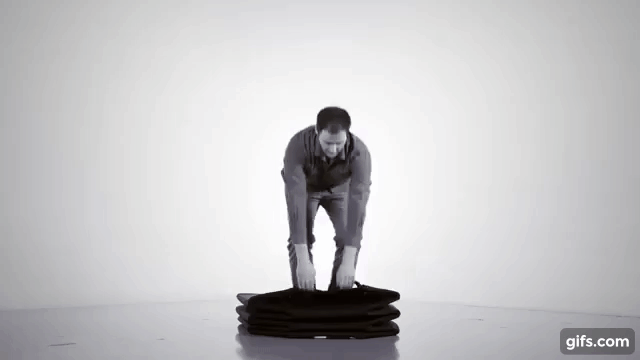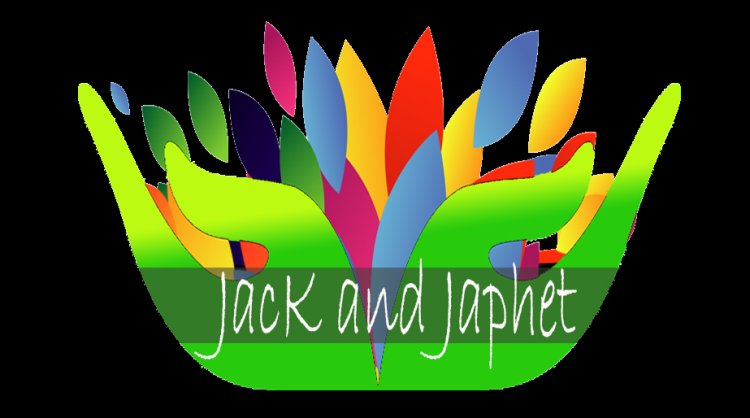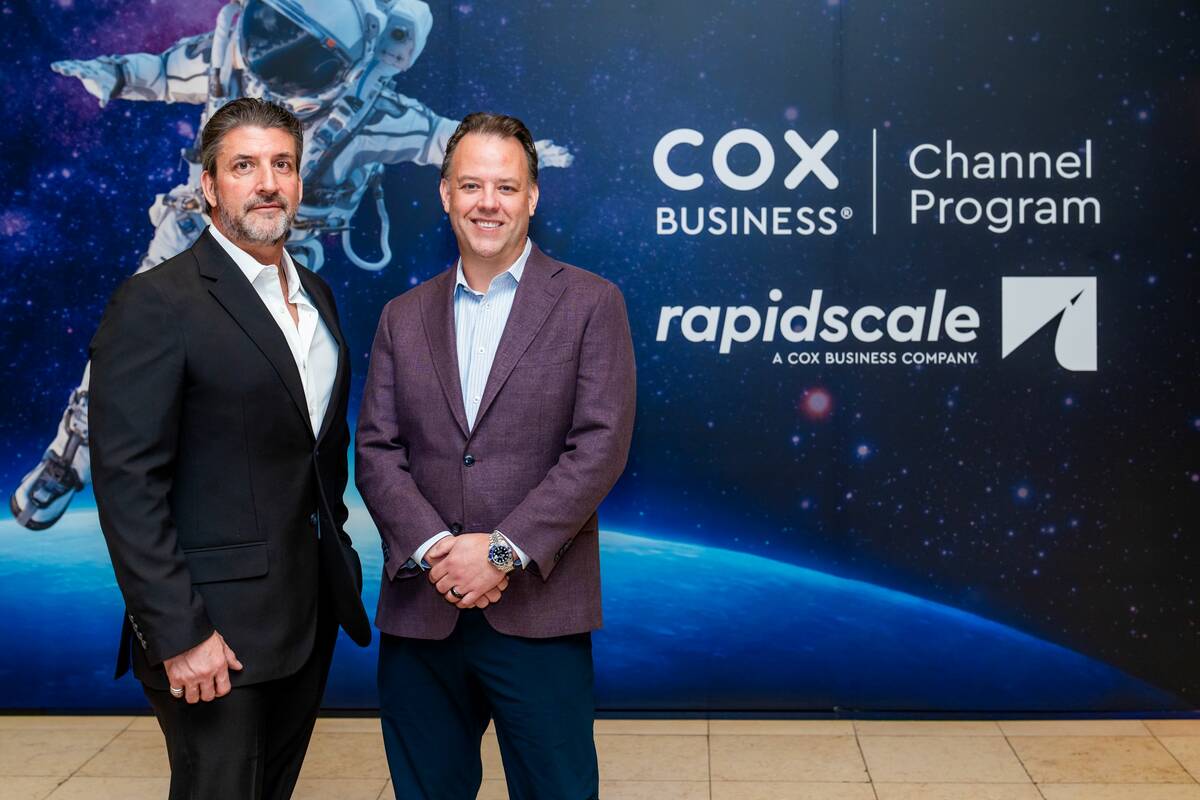The Fairy Tale Shoes: Interview With the Cast and Crew of Cuckoo
Fittingly, director Tilman Singer’s “Cuckoo” feels very much like a bird's nest in form and theme, namely in how it finds ways to coalesce multiple disparate strands into a cohesive whole. The film sees seventeen-year-old Gretchen (Hunter Schafer) arriving in the German Alps with her father, Luis (Marton Csókás), stepmother, Beth (Jessica Henwick), and her seven-year-old stepsister Alma (Mila Lieu). Still grieving at the loss of her mother and feeling ostracized due to her father’s focus on Beth and Alma, Gretchen schemes to end her trip early and go back to America. To pass the time, she works as a receptionist at a hotel run by a family friend, Mr. König (Dan Stevens). Nothing is as it seems, though: guttural screams reverberate throughout the idyllic environment, and people randomly go missing. It culminates when a shrieking woman (Kalin Morrow) begins stalking Gretchen, forcing the teenager to uncover the deeper mystery and conspiracy within the hotel walls. The title and direction for the film were inspired by the common cuckoo bird, which lays its eggs in the nests of other birds. “I thought, ‘Well, I have something here … how do I project this onto humans?’”, Singer shared. The result is a gory addition to the avian monster genre that nests its thrills within a touching story of found family. It plays out like a fever dream fairy tale, thanks in no small part to Richard Neustra’s set designs and Dan Steven’s enigmatic antagonist, who feels just as sinister whether he’s playing the flute or holding a gun. Schafer’s the fierce, bleeding heart of the film, and her struggle for belonging and angst keep “Cuckoo” from flying off the rails of its ambition. At the SXSW, where the film had its international premiere, RogerEbert.com spoke with Singer as well as stars Hunter Schafer and Dan Stevens about why action scenes are the essence of cinema, how learning new skills for a role is a way to fully embody a character, and the bird films that inspired them. This conversation has been edited and condensed for clarity. Tilman, in just over 100 minutes, you’ve crafted such a tight-knit mythology for this modern movie monster. Where did the “seed” for this film come from? Tilman Singer: When I first write stories, I'm usually guided by a vague feeling. As production of the film continues, the feeling reveals itself. For “Cuckoo,” I was guided by sadness and anxiety. It got triggered when I watched a documentary about how cuckoo birds breed. The cuckoo bird doesn’t have a nest; it puts its eggs in the nests of other birds, and those birds raise their offspring. That’s pretty crazy. I watched this documentary where these host parent birds end up with this chick that’s not theirs, and yet they work day in and day out to feed this chick. There was a sense of tragedy and despair to this but there was also beauty and hope to it because they didn’t abandon this bird that isn’t theirs. I thought, “Well I have something here … how do I project this onto humans?” (Laughs) Actually, the first character that formed was Hunter’s character. In nature, the cuckoo’s offspring often hatches first and pushes out the original eggs and chicks of its host family. At first, I thought about making this a “Rosemary’s Baby” thing where we have a child, a demon child, and then a mother character. But after thinking about it, I was like, “Actually, being a sibling in that cuckoo nest is the worst.” Hunter and Dan, what were your reactions when you first read the script? Hunter Schafer: I remember reading the script and initially was like “Woah...okay.” I needed more context on where Tilman was drawing his inspiration from, i.e., the cuckoo lore. I fucking loved learning more about that. I saw “Luz” and understood what Tilman was doing as a director and how he goes about world-building. I then jumped back into reading the script and looked at it through the lens of his past work and his intentions and it all came together for me. A sort of “I see how your mind works” moment. (Laughs) Yeah. After that, I was like, “Okay, done. I’m doing this.” Dan Stevens: I think watching “Luz” was hugely helpful. That film already had an intriguing script and story but watching it, there’s this sense that for all involved, they’re in the hands of a very talented filmmaker. Tilman is someone who understands the tricks of the trade in terms of interloping weird sounds to create an atmosphere or how to bring to life what’s written on the page. I like that feeling when you know you’re in good hands. It was an intriguing story, but I was reading it with a slightly different lens. I was a sort of late addition to this; I don’t think it’s a secret to say that John Malkovich was originally attached to this role. When he was no longer able to do it, the question was: “Well how do we replace him?” Did this character need to be a man in his sixties, or is there a way that we could make König younger and make it still work with the purpose of the story? Rea


Fittingly, director Tilman Singer’s “Cuckoo” feels very much like a bird's nest in form and theme, namely in how it finds ways to coalesce multiple disparate strands into a cohesive whole.
The film sees seventeen-year-old Gretchen (Hunter Schafer) arriving in the German Alps with her father, Luis (Marton Csókás), stepmother, Beth (Jessica Henwick), and her seven-year-old stepsister Alma (Mila Lieu). Still grieving at the loss of her mother and feeling ostracized due to her father’s focus on Beth and Alma, Gretchen schemes to end her trip early and go back to America. To pass the time, she works as a receptionist at a hotel run by a family friend, Mr. König (Dan Stevens). Nothing is as it seems, though: guttural screams reverberate throughout the idyllic environment, and people randomly go missing. It culminates when a shrieking woman (Kalin Morrow) begins stalking Gretchen, forcing the teenager to uncover the deeper mystery and conspiracy within the hotel walls.
The title and direction for the film were inspired by the common cuckoo bird, which lays its eggs in the nests of other birds. “I thought, ‘Well, I have something here … how do I project this onto humans?’”, Singer shared. The result is a gory addition to the avian monster genre that nests its thrills within a touching story of found family. It plays out like a fever dream fairy tale, thanks in no small part to Richard Neustra’s set designs and Dan Steven’s enigmatic antagonist, who feels just as sinister whether he’s playing the flute or holding a gun. Schafer’s the fierce, bleeding heart of the film, and her struggle for belonging and angst keep “Cuckoo” from flying off the rails of its ambition.
At the SXSW, where the film had its international premiere, RogerEbert.com spoke with Singer as well as stars Hunter Schafer and Dan Stevens about why action scenes are the essence of cinema, how learning new skills for a role is a way to fully embody a character, and the bird films that inspired them.
This conversation has been edited and condensed for clarity.
Tilman, in just over 100 minutes, you’ve crafted such a tight-knit mythology for this modern movie monster. Where did the “seed” for this film come from?
Tilman Singer: When I first write stories, I'm usually guided by a vague feeling. As production of the film continues, the feeling reveals itself. For “Cuckoo,” I was guided by sadness and anxiety. It got triggered when I watched a documentary about how cuckoo birds breed. The cuckoo bird doesn’t have a nest; it puts its eggs in the nests of other birds, and those birds raise their offspring. That’s pretty crazy.
I watched this documentary where these host parent birds end up with this chick that’s not theirs, and yet they work day in and day out to feed this chick. There was a sense of tragedy and despair to this but there was also beauty and hope to it because they didn’t abandon this bird that isn’t theirs. I thought, “Well I have something here … how do I project this onto humans?” (Laughs)
Actually, the first character that formed was Hunter’s character. In nature, the cuckoo’s offspring often hatches first and pushes out the original eggs and chicks of its host family. At first, I thought about making this a “Rosemary’s Baby” thing where we have a child, a demon child, and then a mother character. But after thinking about it, I was like, “Actually, being a sibling in that cuckoo nest is the worst.”
Hunter and Dan, what were your reactions when you first read the script?
Hunter Schafer: I remember reading the script and initially was like “Woah...okay.” I needed more context on where Tilman was drawing his inspiration from, i.e., the cuckoo lore. I fucking loved learning more about that. I saw “Luz” and understood what Tilman was doing as a director and how he goes about world-building. I then jumped back into reading the script and looked at it through the lens of his past work and his intentions and it all came together for me.
A sort of “I see how your mind works” moment.
(Laughs) Yeah. After that, I was like, “Okay, done. I’m doing this.”
Dan Stevens: I think watching “Luz” was hugely helpful. That film already had an intriguing script and story but watching it, there’s this sense that for all involved, they’re in the hands of a very talented filmmaker. Tilman is someone who understands the tricks of the trade in terms of interloping weird sounds to create an atmosphere or how to bring to life what’s written on the page. I like that feeling when you know you’re in good hands.
It was an intriguing story, but I was reading it with a slightly different lens. I was a sort of late addition to this; I don’t think it’s a secret to say that John Malkovich was originally attached to this role. When he was no longer able to do it, the question was: “Well how do we replace him?” Did this character need to be a man in his sixties, or is there a way that we could make König younger and make it still work with the purpose of the story?
Reading the script, I was like, “I know who I would make this guy, I know who I would present to Tilman.” I was inspired by this very particular German personality type. I’ve spent a lot of time in that country, and I have a lot of German friends. In meeting their parents, there were traits that I thought would fit well with this character.
TS: We kept him older in spirit.
DS: Yes, König is a traditionalist, a little more conservative. He has these really weird, old-person shoes. They were really fairytale-esque. I don’t even know if we see them that much …
HS: There’s an incredible shot of them … it’s my favorite shot in the film.
DS: (Laughs) Yeah, we called them “the fairy tale shoes.” In many ways, my character is straight out of a fairytale, too. That’s what struck me right away: What happens when you have this very grounded and raw girl in Hunter’s character, Gretchen, enter into this bizarre fairytale arena orchestrated by my weirdo character? That was my starting point.

Speaking to that collision, that final fight scene is where all these huge personalities finally clash. Hunter, you’re fighting Kailan Morrow’s monster character, while Dan is having the slowest shootout possible with Jan Bluthardt’s police detective character. It looked chaotic and fun, but also there were so many moving parts. What was orchestrating and filming that sequence like?
TS: Well firstly, thank you for sharing that.
DS: I want to immediately shout out Jan, who brought such a cool intensity to this recognizably noirish character. I really loved playing opposite him. He’s this incredible German theater actor, and I don’t think he’s done a huge amount on the screen, but he was so intense. I loved that sequence because he was really into it and was willing to go weird.
TS: The sequences were also very technical so it was to do them. But I discovered something about myself: my jam is filming shootouts and action. I don’t remember a day where I’ve been that excited where you and Jan are shooting at each other. It takes hours to set up ten seconds of a shooting sequence-
DS: Dealing with squibs and all that.
TS: Yes, but even still, it’s crazy and supercool. Shooting action feels like the essence of cinema. It’s all about direction and where everything merges: camera, sound …
HS: It’s all very physical and almost all practical effects, too.
TS: There has to be a flash coming out of the gun, but also, in that scene, something has to hit the wall at the same time. So, we had to get into a rhythm of when a trigger was being pulled and how it correlated with the sound.
DS: We all had to be in sync. You’re sort of playing jazz with the sound guys on the buttons to make sure everything is on cue. I love it too. It’s a whole set experience. You have makeup coming in and saying, “Well, you’ve been shot here, so you’ve got to look like this now … your hair has to be more fucked up.”
TS: If you can’t tell, I’m getting excited just talking about this.
DS: Is it worth mentioning that I made this weird insistence about the guns which kind of fucked you initially, and kind of resulted in some weird choices?
TS: Yeah, do that!
DS: We were shooting this very much in the aftermath of the tragedy on the set of “Rust.” A lot of people in the industry have been calling for the use of nonactive firearms. There’s no reason why you should be firing an active one. Frankly, it’s easy to get muzzle flashes in post now. So I said to Tilman, “I don’t want to be on set with any active guns.” We had a few on set that we would be firing with, but this directive limited the specific weapons we could get our hands on.
TS: It’s not limiting per se… you can get any firearm you want. It’s just that the insides are completely replaced. With these nonactive guns, you couldn't even load it with a bullet if you wanted to. But what was very important to me was that a muzzle flash came out, and you had the recoil. I’d rather have the John Woo sort of sparkle come out and have everything be fake rather than doing it in post. I don’t mind that enhancement (laughs). Eventually, we managed to get weapons that could do a muzzle flash, and we did do some enhancing with the post. You never know if you’ll get the flash when you shoot on film.
Hunter, your character’s weapon of choice by the film’s end isn’t a gun but a butterfly knife. I love how you play an unconventional “scream queen” in that you have to survive with a lot of restrictions … you really just have your knife, sling, and iPod to fight with. Was there a skill that was most fun to learn?
HS: Yeah, there were several skills I got to pick up for this movie, which was fun to learn. The first was learning how to use a butterfly knife, which Tilman sent me a dummy of. I got to practice in the two years we waited to film this. I also got to learn bass, which was so much fun and I still play it now. Sign language was another one. I love sign language, and I’m still learning it. It’s popped up in another role I’m currently preparing for. I think I’m just going to go all the way and keep the tutor I have.
You should pick roles based on what skills you want to acquire next.
HS: For real. Because you get to learn for free!
DS: I genuinely do think, though, that if you pick a skill that a character would know and that is outside your wheelhouse, you are, in some way, entering into the character’s mindset because you’re teaching yourself something that character could do that you don’t do. It’s like a module. Like say, a character knows how to windsurf … I don’t know how to, but if a character I play ends up windsurfing … I’d give it a damn good go, and it would teach me something about what my character's experiences that weren’t my own life experience.
HS: Even with bass, the way there’s a physicality to it … that was something that surprised me as I learned it. There’s an attitude and personality that comes with playing it.
TS: It is very important to me that she is a bassist, not a lead singer, drummer, or guitarist. Gretchen has a relaxed and casual attitude but also has a drive.

This film delves into so many themes: environmental preservation, nature vs. nurture, sibling rivalry, processing grief, reproductive rights, found family, etc. There's a lot to balance in this. Were there any in reading/developing the script or filming that resonated the most?
TS: I never have a plan … I always write towards that feeling and emotional structure that I'm aiming for. The theme of family and found family is important to me. I thought a lot about conflict that spans generations and the loops of pain caused when people hurt each other continuously. I get at some of that in this film, too. But also, sometimes ideas come up that I didn’t quite register till later in production. While writing Dan’s character, I began to think, “This guy is an environmentalist.” Mind you, he’s a fucked up environmentalist … but what does that mean? What does it mean for him to try and preserve things at any cost?
DS: There’s this satirical element to my character about how he wants to uphold such ancient values. Sometimes that’s a great thing. Sometimes, that's messed up and something that we need to examine.
HS: I said something earlier where when we watch documentaries about cuckoos or other animals … we can project human motive and emotion to what they do, but in the end, it’s just a cuckoo’s nature. There’s a darkness and bleakness in what cuckoos do, but it’s also, in a way, what humans do to each other too. It’s interesting to see the ways humanity is reflected in nature.
What about the horror genre makes it seem like the right vehicle for your ideas?
TS: For me, making horror movies is very much rooted in how I felt about something at a particular point in time. Maybe different feelings will grow into different genres. Horror as a genre, though, is very fun, and they have this vocabulary and grammar that the audience understands. You can play with their expectations. For “Cuckoo,” it was about creating an atmosphere instead of having this super concrete plot that makes a lot of sense. It has to make emotional sense and the horror genre, in an unconscious way, felt like the right home for this story.
Were there any bird or monster movies that served as a Pinterest board for inspiration as y’all were filming this?
DS: Obviously “The Birds” … obviously “Rio” …
HS and TS: (Laughs)
DS: Have you guys heard of “Kes?” This great Ken Loach film is about a little boy rescuing a falcon. He’s sort of like Hunter’s character.
HS: I’d say “The Last of Us” was an inspiration. Specifically, the infected zombies/zombie monsters … (gestures to Tilman and Dan) y’all gotta play this video game! I keep telling you.




















